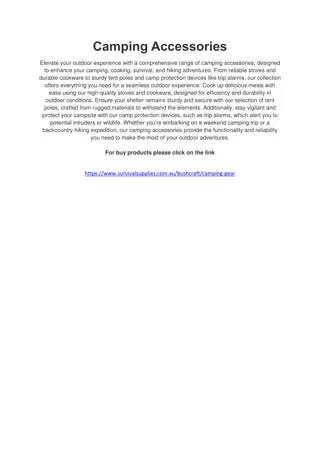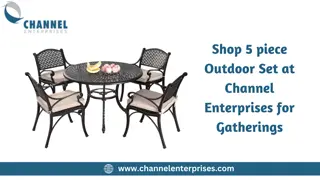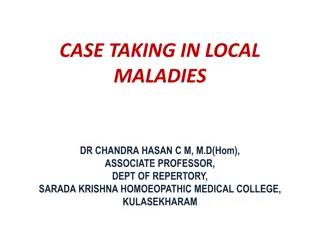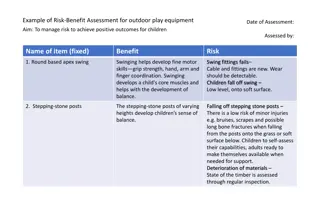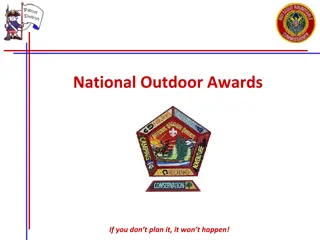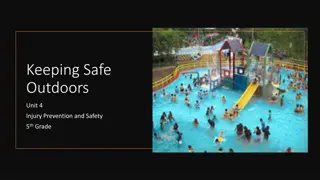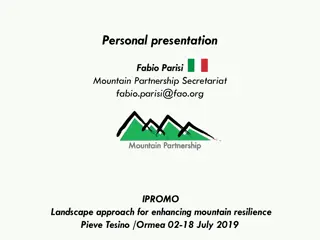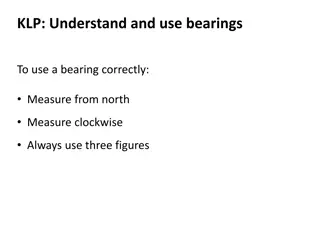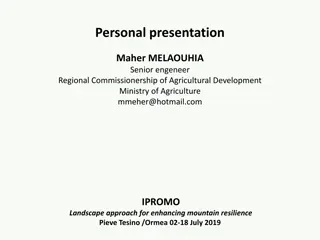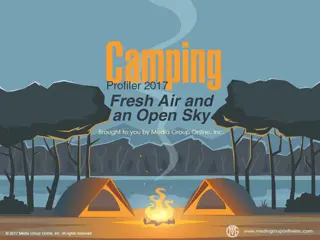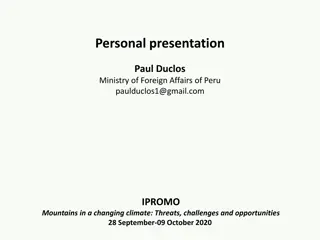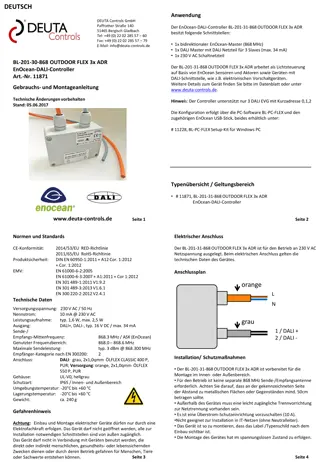Mountain Maladies: How to Prevent and Manage Common Outdoor Health Risks
Explore the risks of outdoor activities, from dehydration to hypothermia, and learn how to identify symptoms and take preventive measures. Discover the importance of staying hydrated, recognizing heat exhaustion, and preventing hypothermia by dressing appropriately and avoiding wet conditions.
Download Presentation

Please find below an Image/Link to download the presentation.
The content on the website is provided AS IS for your information and personal use only. It may not be sold, licensed, or shared on other websites without obtaining consent from the author.If you encounter any issues during the download, it is possible that the publisher has removed the file from their server.
You are allowed to download the files provided on this website for personal or commercial use, subject to the condition that they are used lawfully. All files are the property of their respective owners.
The content on the website is provided AS IS for your information and personal use only. It may not be sold, licensed, or shared on other websites without obtaining consent from the author.
E N D
Presentation Transcript
Mountain Maladies Freedom of the Hills Chapter 23 (8th ed.) Chapter 24 (9th ed.)
Dehydration Heat Exhaustion/Stroke Cold-Related Conditions UV Exposure Acute Mountain Sickness Intestinal Disorders Blisters Panic/Anxiety Strains and Sprains Brocken Bones Shock Diabetic or Anaphylactic shock Cardiac Attack or Stroke Etc, etc, etc. What could go Wrong?
What can you do about it? Be Aware of the signs and symptoms Prevent illnesses and injuries by avoiding and reducing risks This is not a First Aid course
First Aid Kits For every size and budget Each person should have a Basic First Aid Kit Larger groups and longer trips should ALSO have an Advanced First Aid Kit Pack for YOU and YOUR TRIP!
Dehydration Diminished Water (and electrolyte): Sweating Medication (Diuretics) Alcohol and Caffeine Illnesses Breathing Signs and Symptoms: Thirst Dry/Cracking skin Fatigue/Sleepy Aches and Pains Cotton Mouth Reduced awareness
Staying Hydrated Thirst is a definitive indicator that you are dehydrated Urine is an indicator check Color and Frequency Water vs. sports drinks
Heat Heat Stroke Exhaustion The body cannot cool faster than it is heating Signs/Symptoms may include: Headache Rapid pulse & respiration Nausea/Dizziness Cool, clammy skin The body loses the ability to cool itself properly Signs/ Symptoms More severe symptoms of heat exhaustion Stopped Sweating Altered mental state Treatment You cannot cool fast enough Get out of sun Rest on snow Splash water Fan vigorously Cool drinks Treatment includes: Get out of the heat! Rest, preferably in the shade (elevate feet) Replace fluids and electrolytes Do not resume activity Get medical help
Hypothermia Prevention Dress in layers Avoid getting wet / change wet clothing Avoid wind exposure Keep hydrated Symptoms - Mild Shivering Loss of coordination Slowed pulse/respiration Symptoms - Severe Shivering stops Confused /uncooperative behavior Treatment Reduce exposure Change into dry clothes Sugary snacks/replenish fluids Body heat from partners, hot packs, warm water bottles
Frostbite Treatment Treat any hypothermia Don t rub affected area! Best to re-warm injured area after evacuation Refreezing causes greater damage Leave boots on if there is need to walk out Prevention Do not let fingers / toes go numb Keep feet dry Avoid skin to metal contact Mittens better than gloves
Acute Mountain Sickness (AMS) Inadequate Oxygen in the Blood Sets in > 8,000 ft Symptoms resemble the flu or a hangover Headache Nausea Loss of appetite Weakness/Malaise Low urine output Mild cases go away within a day of rest May lead to High Altitude Cerebral Edema (HACE) High Altitude Pulmonary Edema (HAPE)
Giardia Protozoa Introduced to water by urine UV light kills protozoa More often passed on by bad hygiene Symptoms take days to appear
Blisters Likely causes New / poor-fitting boots Trapped moisture Prevention Fit your boots properly Break in your boots Moleskin / athletic tape on hot spot Treatment Don t pop! Doughnut pad to keep hiking Keep clean if it does open up
Panic/Anxiety Self Be aware of surroundings Calmly asses the situation Visualize a successful result Use self-calming techniques Others Attacks last 10-30 minutes Remind them that it is panic attack Will shorten or reduce effects
Injuries LEARN FIRST AID / CPR Take a first aid / CPR class and practice Recognize what is potentially life-threatening Head, neck, spine Try not to move person Require specialized care 80% injuries sprains, strains, soft-tissue Prevent injuries Wear appropriate safety gear Know your limits
Emergency Response check for scene safety (rule #1) treat evident injuries first get the facts and send for help protect injured person(s) until help arrives
Conclusion Know before you go Get first aid kits ready Know the needs of your party Questions?
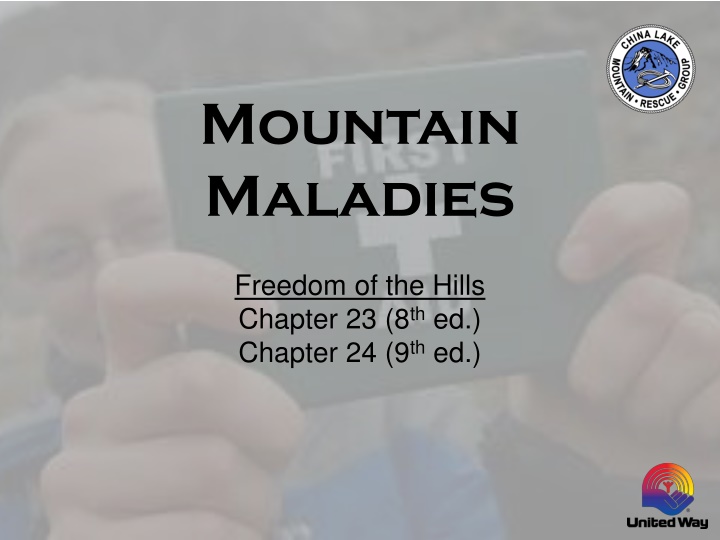


![[PDF READ ONLINE] Mountain Claiming (BIG-Secrets of Mountain Men Book 3)](/thumb/42287/pdf-read-online-mountain-claiming-big-secrets-of-mountain-men-book-3.jpg)
